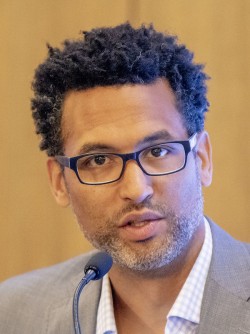Project One
NEW HOUSING AND NEIGHBORHOOD CHANGE: EMPIRICAL EVIDENCE FROM SEVERAL 20th CENTURY LOS ANGELES HOUSING BOOMS
This project uses historical census data on housing construction and neighborhood characteristics – including housing markets – to address core concerns in the contemporary housing policy debate in California. Specifically, how does new housing construction change neighborhoods when a substantial amount of new housing is being built?
Numerous studies demonstrate that a lack of new housing supply in the face of strong demand leads to higher rents and prices at the metropolitan scale. Very few studies, however, have scrutinized how new housing construction changes neighborhoods in a systematic manner, especially the rents in existing buildings. There are several reasons for the limited research, including the challenge in identifying the proper geographic scale of analysis, isolating the causal impacts of new housing, and the limited availability of data.
Moreover, because affluent neighborhoods have historically established a wide variety of exclusionary land use regulations, many people often assume that most new construction occurs in lower income neighborhoods. Policy debates often do not question assumptions around these ideas and those that do are hampered by limited empirical evidence. Without evidence, many voters and residents have an idea that new housing has negative impacts on neighborhoods, and thus prefer its construction to be mitigated by developers or simply to not build at all.
Importantly, recent empirical evidence on new housing construction and neighborhood change is from a time of relatively limited housing construction, given the high rents and prices. For example, in 2010, less than five percent of the housing stock in LA County was built in the previous decade. In contrast, in 1970, 25 percent of the housing had been built in the prior decade. The share was much higher between 1940 and 1960.
For this reason, we take a historical look in this project, to gain insights on this relationship from a time when much more housing was being built. The historical perspective will give us needed insight into present day policy proposals around zoning reform, to assess the potential impacts of upzoning on neighborhood change. Therefore, using data from 1940 to 2010 for Los Angeles County, we seek to analyze two questions. What kinds of neighborhoods added more new housing? How did these neighborhoods change in terms of rents, housing values, incomes, education, and race?
Project Participant Bios
Michael C. Lens is Associate Professor of Urban Planning and Public Policy and Associate Faculty Director of the Lewis Center for Regional Policy Studies at the UCLA Luskin School of Public Affairs. He conducts research on housing, neighborhood effects, and segregation by income and race.
Specifically, his work explores the potential of public policy to address housing market inequities that lead to negative outcomes for low-income families, rooted in issues of housing affordability and segregation. His research has made specific contributions that fill both conceptual and empirical gaps in the literature on topics including: 1) how housing subsidy programs facilitate access to high-opportunity neighborhoods; 2) the causes and consequences of neighborhood crime, particularly with respect to subsidized housing and economic development; 3) how residential location affects employment outcomes for low-wage workers; and 4) measuring neighborhood opportunity for low-income households.
Extramural funding highlights include a 2013 three-year award from the MacArthur Foundation for $610,000 to support a study of the effects of the housing boom and bust on local government finances. In other work on the Great Recession, Professor Lens examined the role of housing subsidies in insulating low-income renters from increasing cost burdens. He was also awarded a three-year grant from the Arnold Foundation to study misdemeanor arrests in Los Angeles.
In recent research, Professor Lens is studying the effects of housing supply in Los Angeles, the role of public investments in gentrification processes, and the spatial concentration of eviction. Professor Lens’ research has won awards from the Journal of the American Planning Association and Housing Policy Debate.
Professor Lens has a Ph.D in Public Administration from New York University’s (NYU) Wagner School, where he served as a Research Fellow at NYU’s Furman Center for Real Estate and Urban Policy. Michael also has a Bachelor of Arts in Political Science from Macalester College, a Master of Public Policy from the University of Michigan, and a Master of Science in Public Administration from NYU.
Paavo Monkkonen is Associate Professor of Urban Planning and Public Policy at the UCLA Luskin School of Public Affairs. Dr. Monkkonen researches, writes, and teaches about the ways housing policies and markets shape urban development. His scholarship ranges in scale from national housing finance programs to local land use regulations, and includes comparative work on the Americas (Argentina, Brazil, Mexico, and the United States) and Asia (China, Hong Kong, India, Indonesia). He is currently researching California’s Housing Element Law and is an ex-oficio member of the Southern California Association of Government’s Region Housing Needs Assessment methodology sub-committee. Dr. Monkkonen completed a Master of Public Policy at UCLA in 2005, and a PhD in City and Regional Planning at UC Berkeley in 2009. He was Assistant Professor of Urban Planning at the University of Hong Kong from 2009 to 2012.



